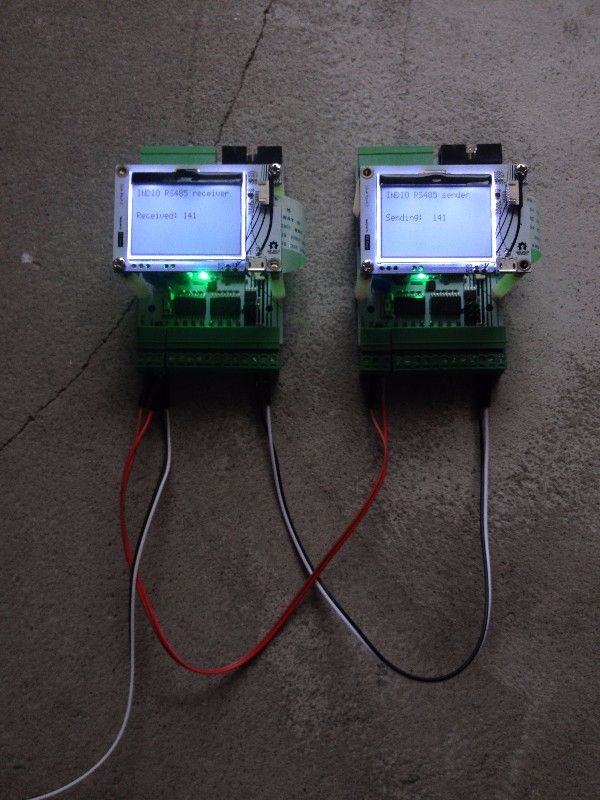
The Industruino INDIO has a half-duplex isolated RS485 transceiver, connected to the 'Serial' hardware serial ('Serial1' on the older 32u4 and 1286 boards). RS485 is a popular industrial standard for serial communications. It is often used with the Modbus protocol, as Modbus RTU. Using available libraries, this is relatively easy way to exchange data between Master/Slave(s) units, e.g. several INDIOs, or other sensors that support Modbus RTU.
In case you are just interested in serial communication, the RS485 port enables you to communicate over distances up to 1-2 km.
In the Industruino INDIO, the RS485 is connected to the hardware serial Serial (D0/D1) on D21G model (or Serial1 on the old 32u4/1286 models), so there is no need to use a software serial.
Note that RS485 is half-duplex, so we cannot send and receive at the same time. We need to use a TxEnablePin to switch between sending and receiving. This pin is connected to D9 on our MCU.
We have to connect 2 wires for the RS485: A to A, and B to B.
When available please connect the shield ground of the RS485 cable to the GND connection of the RS485 port to avoid common-mode voltages that could potentially damage equipments.
In the picture on the left, the 2 INDIOs are powered from the same PSU so the GND connection is not neccesary.
The 2 sketches below are for a Sender that sends a single byte (increased by one, every second), and a Receiver that reads the byte and puts it on the LCD.
TESTED WITH 2x INDIO D21G
/*
* Industruino INDIO RS485 serial demo SENDER
* INDIO has a half duplex RS485 port connected to hardware Serial
* TxEnablePin is D9
*/
#include <UC1701.h>
static UC1701 lcd;
const int TxEnablePin = 9;
byte byte_sent = 1;
void setup() {
pinMode(26, OUTPUT);
digitalWrite(26, HIGH); // LCD backlight
lcd.begin();
Serial.begin(9600);
pinMode(TxEnablePin, OUTPUT);
lcd.clear();
lcd.print("INDIO RS485 sender");
lcd.setCursor(0,3);
lcd.print("Sending: ");
}
void loop() {
lcd.setCursor(60,3);
lcd.print(byte_sent);
lcd.print(" ");
digitalWrite(TxEnablePin, HIGH);
Serial.write(byte_sent);
delay(10);
digitalWrite(TxEnablePin, LOW);
delay(1000);
byte_sent++;
}
/*
* Industruino INDIO RS485 serial demo RECEIVER
* INDIO has a half duplex RS485 port connected to hardware Serial
* TxEnablePin is D9
*/
#include <UC1701.h>
static UC1701 lcd;
const int TxEnablePin = 9;
byte byte_received;
void setup() {
pinMode(26, OUTPUT);
digitalWrite(26, HIGH); // LCD backlight
lcd.begin();
Serial.begin(9600);
pinMode(TxEnablePin, OUTPUT);
digitalWrite(TxEnablePin, LOW);
lcd.clear();
lcd.print("INDIO RS485 receiver");
lcd.setCursor(0, 3);
lcd.print("Received:");
}
void loop() {
if (Serial.available()) {
byte_received = Serial.read();
lcd.setCursor(60,3);
lcd.print(byte_received);
lcd.print(" ");
}
}